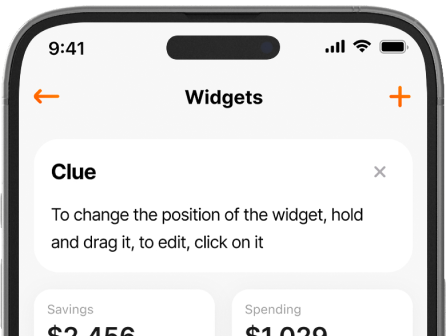You’re saving money for a financial goal that’s about two years away. The simplest way to do that is to open up a savings account and deposit your money there, but when you look at the interest rates available, you’re disappointed to see that they’re much lower than the inflation rate. You don’t want your money to depreciate, so you consider investing it instead—but that’s risky! You could lose money on your investments and have to wait years for it to rebound. So, what is a short/medium-term saver to do? Take chances on some investments or watch your money slowly decline in value? Luckily, there is a third option: balance your safe cash-equivalent savings with low-risk short-term investment. It takes a little more work, but if you want to beat inflation, these are your options.
Cash Equivalents

Chances are you already have a checking account, and possibly a savings account. Cash equivalents also include the less-common certificates of deposit (CDs) and money market accounts (MMAs), however.
Saving in a checking account is probably not a good idea—not only is the interest rate going to be quite low but your savings will be mixed with your spending money.
Savings accounts have better interest rates and still allow you to withdraw money up to six times a month, but a money market account will probably offer the best interest rates with a similar level of flexibility, apart from perhaps a higher minimum deposit requirement.
Certificates of deposit often pay higher interest than money market accounts, but you’ll have to commit to locking up your money for a fixed period. If you have a goal that’s two years away and you definitely won’t need the money until then, a two-year CD can be a good choice. If the timeline isn’t necessarily fixed, though, you may want to look into shorter-term CDs or other cash-equivalent accounts.
As your goal gets closer, you’ll want to make sure that a higher percentage of your money is sitting in these types of accounts. This way, you minimize the risk of a sudden loss setting you back, which is generally worth the lower returns in the short term.
Short-term Bond Funds
You might be familiar with bonds as the safer alternative to stocks in your retirement investment portfolio, but they can also be effective for short-term saving!
A bond is a loan you make to a company or government that the entity will pay back to you with interest after a fixed period of time. A bond fund mixes a lot of these together. By buying a piece of this bond fund, you’ll have a share in all these government/company bonds, reducing your risk from any one bond while still getting you reliable returns.
The returns won’t typically come close to stocks or long-term bonds, but they can at least help you match inflation while staying fairly liquid! They do have some risk and can be a bit more complex to buy, but bond funds are probably worth a try if you have a goal that’s a few years away.
You can buy short-term bond funds from investment brokers or by using your own brokerage account to buy short-term bond ETFs. There are a lot of different funds available, so it’s a good idea to do a little research to figure out the risks and returns you’re comfortable with.
Money Market Mutual Funds
Money market mutual funds are even lower-risk than bond funds, and, appropriately, come with lower returns. Though similarly named, these funds aren’t the same as money market accounts: instead, they invest in stable, very liquid things like cash, securities with high credit ratings and short terms, etc.
Basically, they’re one of the safest things you can get aside from cash, and though they don’t offer high returns, if you find one with higher rates than the highest available savings account, it may be worth investing in! However, in many cases, you’ll be able to find savings accounts that match or exceed money market mutual funds, in which case these won’t be very useful.
P2P Loans
P2P (peer-to-peer) lending is becoming increasingly popular, and becoming a lender on one of the available platforms can be a solid short-term saving strategy! Risks are fairly low and returns are typically higher than inflation.
If you get a P2P loan, it means that instead of owing money to a bank, you owe money directly to private individuals who decided to lend it to you. Borrowers get easier access to credit, and lenders—like you—earn interest on their loans. As a lender, you’ll probably lend money out for a few years (often 2-5) and earn up to 36% per year on your loan—though a 36% interest rate is probably an indicator of a very risky loan!
If you’re worried about putting all your eggs in one basket, most P2P lending platforms allow you to fund just part of a loan, meaning you can spread your money across many different loans with different risks and interest rates. For short-term savers, it is generally a good idea to make an investment in a wide range of the safest available loans, since even these will usually pay interest rates higher than inflation.
P2P loans do require you to lock up your money initially, but you will get payments on your loans every month, so there is some level of flexibility. Some platforms also let you sell off loans that you don’t want to hold anymore, so if you have less certainty about your timeline, you may want to look for a platform that offers this ability.
As investments go, P2P loans are quite user-friendly! Platforms like LendingClub and Prosper have made it easy to sign up and make loans, and they grade loans so that you can clearly tell what risk level each one carries.
Stocks

The stock market has ups and downs. Over a long enough period of time (10+ years), a well-balanced stock portfolio will almost always end up turning a profit, but a severe downturn could leave you with losses that take years to recoup. That’s not great for short-term savers, but depending on your time horizon, there are some low-risk investment strategies that could be profitable if you’re comfortable enough with assessing, buying, and selling stocks.
You’ll want to look for low-volatility mutual/index funds and low-volatility ETFs, which are designed for maximum stability and will likely take less of a hit in a stock market decline. Dividend ETFs can also be beneficial for short-term strategies, as they’ll regularly pay out cash and tend to have lower volatility than non-dividend stocks.
Low risk doesn’t mean no risk, though, and unless you’re confident in your abilities, it’s probably best to limit the amount of stocks in your short-term portfolio. If your goal is more than five years away, some stock exposure can be worth it, but the unpredictability of the market often makes stocks a poor choice for goals closer than that.
Investments for Different Time Horizons
If your goal is just a year away, you probably don’t want to take on a lot of risk—cash equivalents are the way to go! With a five-year goal, though, you could try to increase your gains using instruments like bond funds, P2P loans, and even stocks! Here, we’ll suggest a few ideas for asset mixes depending on your time horizons.
With all of these strategies, though, keep in mind that you shouldn’t necessarily keep the same balance of assets for your entire savings period. As your goal gets closer, you should sell off your riskier instruments and move into cash equivalents to guard against sudden losses.
These are just suggestions, though—ultimately, you want a savings strategy that both fits your risk profile and isn’t too difficult for you. Spreading your money across too many different places can get confusing, so you may want to pick one cash instrument and one investment instrument and just use those.
For example, let’s say you have a goal that is four years away. You decide to open a money market account that pays 0.5% APR and a P2P lending account. Short-term bond funds, low-risk mutual funds, and other investment instruments are also options, but you decide to keep it simple. As you start saving, you put 80% of what you save into P2P loans at 3-7% interest. Over time, you start putting less and less into P2P loans and more into your MMA. By the time your goal is a year away, you’re putting 100% of your money into the MMA and most of your P2P loans are close to being paid back.
You can follow a similar approach by mixing and matching any of the instruments above, depending on which are easiest for you to manage. There’s no 100% right or wrong way to do short-term savings, it will always depend on your financial situation and how the investment market is doing. If savings accounts have interest rates that are beating inflation, you may just want to keep your money in there!
Is there a simpler way?
If you have no appetite for risk and are okay with losing some of your money to inflation, a savings, CD, or money market account will keep your money safe with minimal effort on your part. Every strategy that allows you to beat inflation, though, will require you to be comfortable with at least some complexity.
There are some fairly simple solutions if you want your savings to be a bit more profitable, but at the very least you’ll have to figure out a way to buy short-term bond funds, make P2P loans, purchase a mutual fund, or buy an ETF. Ideally, you’ll also be able to tell risky investment ideas from safe ones and decrease your risk as your short-term goal gets closer. You can find online services that will help you do all these things, but at the end of the day, you’ll have to put some time and effort into your savings plan.








